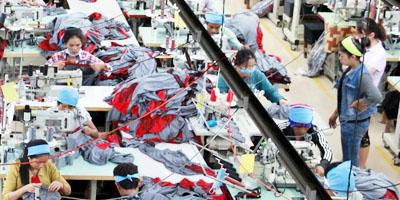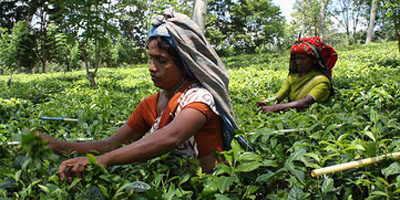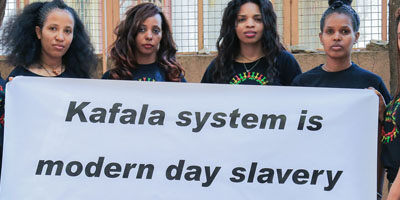The Ashanti region of Ghana is one of many areas where tragedies in small-scale gold mines occur, such as the story of Thomas, a smart teenager looking to a brighter future. He regularly worked in small-scale gold mines, while also going to school. One day while working in a mine pit in the rural area of Ashanti, the mine pit collapsed on top of him. Although he was dug out of the pit, he died before arriving at the hospital.
Juliane Kippenberg, associate director in the Children’s Rights Division of Human Rights Watch, learned Thomas’ story through interviewing a family in Ghana. “This is just one of many cases where youth, or young adults, have died in mines, or mines have collapsed, or where there have been other forms of accidents,” she said, describing how over and over in her work she has met families and parents of children of young adults who died in the gold mines.
Consumer choice
To avoid buying jewellery that comes from such dangerous mines, consumers can become aware of where a company sources its gems and minerals. Ethical jewellery is a social justice issue that is highly consumer-driven. Consumers can take the initiative to learn whether their jewellery is responsibly sourced or not, by asking their retailer about their traceability and due diligence. Jewellery companies that have strong ethical sourcing practices are transparent about their gem/mineral supply chain, from mine site to export- who the miners are (country and company), how much was paid, and how the gem/mineral reaches the jeweller. Such transparency is crucial to ensure that the consumer’s purchase isn’t contributing to conflict or human rights abuses, such as child labour or corruption. Unfortunately, many companies fall short of this.
Setting standards – the Kimberley Process
Zuzia Danielski, the communications director at IMPACT- a Canadian based NGO focused on natural resource management and its effects on communities, especially in Africa, spoke about how her organization has contributed to ensuring the transparency of jewellery supply chains.
IMPACT was one of the first organizations to bring to light the link between diamonds and conflict financing, which lead to the establishment of the Kimberley Process (KP). The KP Certification Scheme became the key international initiative aimed at ending the global flow of “blood diamonds” and the contribution of diamond trade to armed conflict.
“A lot of work was done in the 1990s and early 2000s around the issue of blood diamonds, as well as international pressure on companies and governments to take action on the diamond supply chain,” Danielski said. IMPACT was a civil society founding member of the Kimberley Process initiative.
While the KP is important, it has a number of severe limitations, Danielski says. For example, it is only committed to rough diamonds and has a narrow definition of conflict.
“Once a diamond is mined and goes from pit to export at the original country level, and then goes to a trading center to be cut or polished, that’s where traceability and due diligence based on the KP Certification Scheme ends.”
IMPACT left the KP in December 2017, after coming to the conclusion that its certification does not provide enough assurance that there is a traceability and due diligence system in place to ensure that conflict diamonds are not entering the legal supply chain.
Danielski says that IMPACT found that conflict diamonds or elicit diamonds that are being smuggled into countries are entering the legal supply chain. As a result, there is no KP certification that accompanies a diamond to the point of a consumer’s purchase. Rather, the KP certification ends at the cutting and polishing center.
“In this way, unless a jeweller puts in place full traceability on their supply chain, they have no assurance nor any guarantee as to where their diamonds have come from.”
Having pulled away from the KP, Danielski told the Upstream Journal that IMPACT advocates and strongly pushes for full traceability and due diligence along the entire jewellery supply chain.
Kippenburg also says that a problem with the Kimberley Process is the lack of monitoring. She said that there are loopholes, and unethical trade continues despite the certification, so the issue of blood diamonds has yet to be solved.
A narrow definition of conflict is also a concern. Kippenberg says that abuses carried out in a country like Zimbabwe, for example, are not included.
“This has meant that in many situations, very severe human rights violations can take place but they are not actually falling under the Kimberley Process definition,” she said.
The Responsible Jewellery Council
Another step that has been taken to stop human rights abuse in the sector is the creation of the Responsible Jewellery Council, with more than 1,000 member companies that are engaged in the supply chains of diamonds, gold, platinum group metals, silver and coloured gemstones (rubies, sapphires and emeralds). The members are audited for compliance with the Council’s certification standard, called its “Code of Practices.”
However, Kippenberg says that Human Rights Watch studies have found that this standard is too superficial and lacks strong human rights requirements.
“When jewellery companies, or companies in the jewellery supply chain, are audited against a standard and are certified to be in compliance, the Code of Practices fails to guarantee that they truly are not contributing to human rights violations.”
The Council strengthened the standards in 2019, when its aligned its Code of Practices with the global standard set by the Organization for Economic Cooperation and Development, its Due Diligence Guidance for Responsible supply Chains of Minerals from Conflict-Affected and High-Risk Areas.
“HRW is very pleased to see these efforts, and we hope that the standard will not only get strengthened, but that the requirement for jewellery companies and other companies in the supply chain will also rise,” Kippenberg said, acknowledging that the OECD has set the accepted standard for responsible minerals sourcing in the field. It builds on the general UN Guiding Principles on Business and Human Rights, and spells them out in much more detail for the minerals sector. However, additional work is needed to ensure that this standard is applied across the diamond trade through proper monitoring of member states of the OECD.
Kippenberg says that specific national laws are a way to diminish human rights violations in the production of gems and minerals, giving the examples of the Dodd-Frank Act in the U.S. which regulates financial markets and protects consumers, the Duty of Vigilance law in France and the Modern Slavery Act in the UK. Even if these laws are not perfect, they have successfully prompted businesses to take additional important steps towards strong human rights due diligence, she says.
Fair trade jewellery
Some companies are taking steps to ensure that they are not sourcing from suppliers who disregard human rights. Based in Toronto, “Fair Trade Jewellery Company” (FTJCo) is an example of responsible sourcing of gems and minerals. Working with IMPACT’s “Just Gold” project, in 2017 it completed its first successful import of gold from the Democratic Republic of Congo.
According to Kesha Frank, the head of production and due diligence manager, FTJCo sells a house blend of 50% just gold and 50% recycled gold.
“What’s interesting about the ‘Just Gold’ project is that FTJCo is able to disclose when a particular lot of gold was mined and who the miners are,” she says. Danielski said that IMPACT has been working to implement traceability and due diligence for artisanal gold coming from the DRC by working with a local mining cooperative in north eastern Congo.
Frank said that all information is tracked from the mine until it leaves the jeweller as the final product to ensure that there is no conflict, child labour or corruption linked to its gold. “Every ring or object that FTJCo makes with ‘Just Gold’ is assigned a serial number, which refers to the entire chain of custody. FTJCo provides data that accompanies all of their gold – who the miners are, how much was paid, the full link in the supply chain from mine site to export and how it reaches FTJCo.”
Why are more companies not as transparent about their sourcing?
“We’re not hardwired to care about people we never meet, or to places we never go. Most companies are not fully transparent about their sourcing because of how difficult it is, she says. “Unfortunately, the jewellery industry is not set up for the type of work that FTJCo does. In general, people in the industry are not interested in doing the work necessary in order to ensure that their gems and minerals are responsibly sourced.”
Frank said that FTJCo is lucky, in the sense that they have been able to develop relationships and encourage people through different conversations to start thinking about responsible sourcing. “FTJCo has had the opportunity to do so through industry events where we do loads of advocacy in our industry for responsible sourcing.”
It is not entirely the responsibility of consumers to seek responsibly sourced jewellery, but the more they know, the more they can start asking questions about a jewellery company’s sourcing, Frank says. “A lot of it comes down to the media and people being actively engaged in furthering this discussion. The more this conversation becomes mainstream, the more people will start to care. Ultimately, consumers need to start asking questions. Tell me about who audited your factories? Tell me about who sourced your materials? The more people start engaging in that way, the bigger the conversation can be.”
Danielski agrees that consumers to be more conscious about the decisions they make and the implications of those decisions. “It’s all about being aware of where your jewellery comes from, by knowing to ask the right questions to jewellers, such as asking where their jewellery comes from and understanding the people potentially impacted by their purchase.”
Regulation and responsibility
Kippenberg said that companies themselves must act more responsibly, and apply recognized standards. “Companies should apply the UN Guiding Principles on Business and Human Rights, which apply to everybody. The OECD standard on this in the mineral supply chain is accepted now as the norm in the minerals field”.
She says that the OECD standard is very important to understand, since companies tend to rely on an auditor to either check on their work or on what they should be doing, or they find a consultant or become a member of an industry scheme such as the Responsible Jewellery Council. “While those may be useful tools, they do not replace the company’s own responsibility towards action.”
She also wants to see action from the companies in the jewellery supply chain. “Ultimately, a lot of jewellers may only get traceability if key actors in the middle of the supply chain provide the information.”
For example, Kippenberg said that for gold, refineries need to have the information on where the gold is from, down to the mines of origin, and provide this information to the jewellery companies and to any others in the supply chain.
“This is something that has many moving parts to it, but certainly the jewellery industry has a huge responsibility for big brands to really use their leverage to improve their supply chain due diligence.”
She wants to see industry standards of the Responsible Jewellery Council aligned with the OECD standard, which brings together governments, companies, and civil society. “Not only does the Council’s standard need to be strengthened, but it also needs to make sure that auditing process is much more transparent.”
Governments also have a key role to play, she said. “Governments in countries where big jewellery brands are based need to have strong legislation making human rights due diligence a requirement.”
Kippenburg recognizes that regulating the jewellery industry presents huge challenges that companies themselves can’t take on. Governments in producing countries have a responsibility to regulate exports in line with international standards on due diligence and traceability. “It is absolutely vital that those countries take steps to ensure that mining can happen where it doesn’t violate human rights.”
Tiffany and Co., acknowledged for its social and environmental policies as a global retailer, and Signet Jewelers, the world’s largest retailer of diamond jewellery, did not accept interview invitations for this article.
Interview with Juliane Kippenberg by Alejandra Alzate. Other interviews by Michelle Rossy, the article author.








